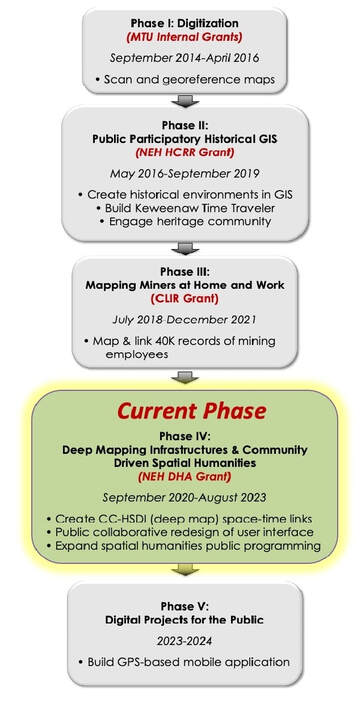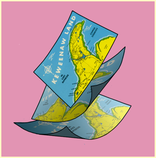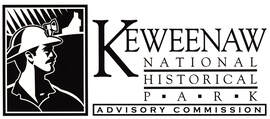 Developing the Copper Country Historical Spatial Data Infrastructure (CC-HSDI) (aka Keweenaw Time Traveler) has been an ambitious endeavor, bringing together researchers, students, and the heritage community to build a space-time linked deep map that revolutionizes the way people use historical maps and data. Since work started in 2015, our team has developed data-rich maps for our region between the years 1888-1950, linking different archival records such as city and business directories. In the first three years of the project community member “citizen historians” made over 250,000 classifications and transcriptions in the three builder apps. This data is automatically added to the more than 116,000 building footprints and other records which are available in the Keweenaw Time Traveler Explore app. Since the beginning of the project we have been committed to community engagement, hosting 10 public design charrettes and introducing users to the Time Traveler at 21 festivals and public events between 2017-18. Teammates successfully published 2 dissertations, presented over 30 conference papers, and published 11 peer-reviewed papers in interdisciplinary journals which included American Quarterly, Journal of Community Heritage and Society, and Historical Methods. We are honored to announce that the National Endowment for the Humanities Office of Digital Humanities has awarded us a three-year grant to move the CC-HSDI and the Keweenaw Time Traveler to the next phase! Much of the $324,985 awarded will go to support Michigan Tech students who will learn on-the-job skills in historical GIS and geospatial technology applications for public history. Phase IV of our project has three main goals:
Toward the end of this three-year grant period, we will also offer tools for reproducibility so that other communities might be able to build their own “deep maps.” We plan to host webinars and make freely available the process, procedures, and coding that we used. The Keweenaw Time Traveler has been developed specifically to match the history, landscape, and archival resources here in our community. Other communities will need to tailor their deep maps to their own specific needs and resources. But sharing our process should make the concepts accessible so they can be used to produce rich digital spatial humanities projects that create meaning and context in other locations. These webinars will help other scholars and communities to begin building deep maps that serve their individual needs without having to reinvent the wheel.
This project has made, and is now able to continue making, theoretical and methodological contributions to the fields of historical GIS, spatial humanities, and public history. Phase IV will innovate our platform and methods, and empower others to use deep mapping to study and protect their own cultural heritage. We anticipate that three main groups will immediately benefit from our planned work, being the field of digital spatial humanities, researchers in social, cultural or environmental studies, and residents of Michigan’s Upper Peninsula whose work with KeTT is a contribution to their own histories. The Keweenaw Time Traveler is made possible, in part, by our partners in MTU Social Sciences, the Advisory Council of the Keweenaw National Historical Park, and the National Endowment For the Humanities.
0 Comments
Leave a Reply. |
|




 RSS Feed
RSS Feed



